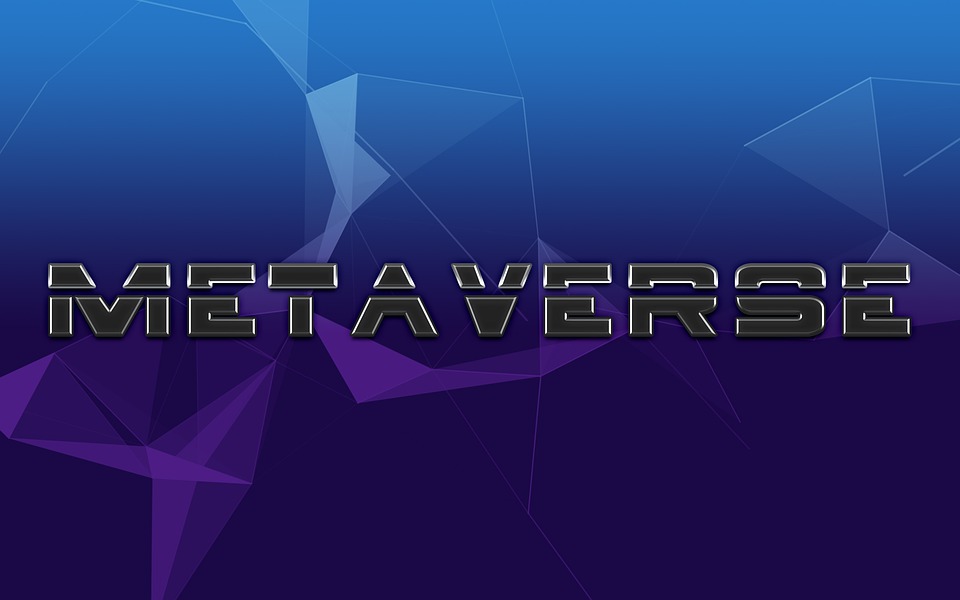Uncategorized
Generative AI Landscape: Current and Emerging Trends
by Author
-
Wednesday, April 19, 2023
119 Views
The Generative AI Landscape: Where We’re Headed
The lawyer’s fundamental job is to take super complex and technical things and boil them down to very easily digestible arguments for a judge, for a jury, or whoever it might be. I think there’s been some discussion that people may litigate some of these things, so I can’t comment, because those frequently do come to our courthouse. So much of what judges do is that we rely on the parties that are before us to tell us what’s right and what’s wrong.
However, some of these applications provide an interesting glimpse into what the future may hold. Once you see a machine produce complex functioning code or brilliant images, it’s hard to imagine a future where machines don’t play a fundamental role in how we work and create. Several advanced models have been developed on these computing and cloud systems, including BERT, RoBERTa, Bloom, Megatron and the GPT family. BERT is one of the first pre-trained models that incorporated transformer architecture and resulted in state of the art scores in many NLP tasks. RoBERTa is a variant of BERT, trained on a much larger dataset with a more efficient training procedure.
Choose nocode, low-code, or full code
Progress also just completed its acquisition of MarkLogic, a NoSQL database provider MarkLogic for $355M. MarkLogic, rumored to have revenues “around $100M”, was owned by private equity firm Vector Capital Management. As there are comparatively few “assets” available on the market relative to investor interest, valuation is often no object when it comes to winning the deal. The market is showing signs of rapidly adjusting supply to demand, however, as countless generative AI startups are created all of a sudden. Many startups right now are sitting on solid amounts of cash and don’t have to face their moment of reckoning by going back to the financing market just yet, but that time will inevitably happen unless they become cash-flow positive. The problem, of course, is that the very best public companies, such as Snowflake, Cloudflare or Datadog, trade at 12x to 18x of next year’s revenues (those numbers are up, reflecting a recent rally at the time of writing).

Models like T5 perceive every NLP task as a text-to-text translation task, while RoBERTa, a BERT derivative, enhances performance with a distinct training approach and larger data batches. Transformer-XL incorporates a recurrence mechanism to retain a longer memory of past inputs, and DistilBERT reproduces BERT’s functionality in a smaller, less resource-intensive design. With generative AI requiring less energy and financial investment, the generative AI landscape has expanded to include a number of established tech companies and generative AI startups.
Sales & customer success
Optimization of supply chain logistics through AI analysis is another example, where generative AI can help businesses make more informed decisions and streamline their operations. Our content series “It All Starts with People” delves into the passions, motivations, and vision of the exceptional founders we have the privilege of partnering with around the world. Read the story of Abraham Burak and Bahadir Ozdemir, co-founders of Airalo, Yakov Livshits who are on a mission to make connectivity around the world accessible and affordable. It’s possible Gen-AI will replace millions of jobs from designers to producers to artists; however, creatives will always exist in some aspect. Among the 360+ generative AI companies we’ve identified, 27% have yet to raise any outside equity funding. Meanwhile, over half are Series A or earlier, highlighting the early-stage nature of the space.
DBS has incorporated open-source tools for coding and application security purposes such as Nexus, Jenkins, Bitbucket, and Confluence to ensure the smooth integration and delivery of ML models, Gupta said. It is interesting, and I will say somewhat surprising to me, how much basic capabilities, such as price performance of compute, are still absolutely vital to our customers. Part of that is because of the size of datasets and because of the machine learning capabilities which are now being created. They require vast amounts of compute, but nobody will be able to do that compute unless we keep dramatically improving the price performance. We see the benefits of open finance first hand at Plaid, as we support thousands of companies, from the biggest fintechs, to startups, to large and small banks.
Mahesh Kedia VP, GTM Strategy, New Market Entry and Revenue Operations, Marqeta
Yakov Livshits
Founder of the DevEducation project
A prolific businessman and investor, and the founder of several large companies in Israel, the USA and the UAE, Yakov’s corporation comprises over 2,000 employees all over the world. He graduated from the University of Oxford in the UK and Technion in Israel, before moving on to study complex systems science at NECSI in the USA. Yakov has a Masters in Software Development.
Despite being newer than Hugging Face Hub, it has been growing rapidly, offering several features that make it an excellent choice for sharing and using pre-trained models. Google’s BART, standing for “Bidirectional and Auto-Regressive Transformers,” is a denoising autoencoder that pre-trains sequence-to-sequence models. Particularly efficient at text generation and rewriting tasks, BART showcases the versatility of foundation models. Their main challenges are that they may be biased depending on the training data used, may collect user data, and may need to be more accurate (depending on the task).
The company landscape for artificial intelligence in large-molecule … – Nature.com
The company landscape for artificial intelligence in large-molecule ….
Posted: Tue, 29 Aug 2023 07:00:00 GMT [source]
By facilitating the sharing of models within a shared space, they foster a sense of community where developers can learn from each other and collaborate on enhancing existing models or creating new ones. They also support model versioning akin to code repositories, allowing for the accessibility of previous versions of models even as they are updated and improved. This can be particularly beneficial for reproducing academic research or ensuring stability in production environments. Companies adopting generative AI apps are raising the standard by improving their operational performance and building advanced products and services. Enterprises with established business models and large customer bases are adopting generative AI to quickly enhance their current end-user applications and improve their processes. Generative AI is in the early stages of development, with players needing more differentiation and user retention, so it is unclear how these generative AI applications will generate value.
We have already made a number of investments in this landscape and are galvanized by the ambitious founders building in this space. Form Factor Today, Generative AI apps largely exist as plugins in existing software ecosystems. Code completions happen in your IDE; image generations happen in Figma or Photoshop; even Discord bots are the vessel to inject generative AI into digital/social communities. Despite all the fundamental research progress, these models are not widespread. They are large and difficult to run (requiring GPU orchestration), not broadly accessible (unavailable or closed beta only), and expensive to use as a cloud service. Despite these limitations, the earliest Generative AI applications begin to enter the fray.

Well-known applications such as ChatGPT, Bard, DALL-E 2, Midjourney, and GitHub Copilot demonstrate the early promise and potential of this breakthrough. Observe.AI is an end-to-end AI platform for contact centers that analyzes and provides insights on 100% of customer interactions in real-time. It uses live conversation intelligence to help frontline teams improve performance and achieve better business outcomes, such as increased sales conversions, improved compliance adherence, and higher customer Yakov Livshits satisfaction. The platform provides valuable insights into customer conversations, enabling businesses to optimize agent performance, reduce compliance risk, and grow their business. It has been recognized by analysts and trusted by businesses for its ability to drive results across the contact center and beyond. Real-time customer segmentation allows businesses to categorize their customers in real-time based on a variety of factors, such as their behavior, demographics, and preferences.
This is the largest space by far in the Admin category and a market with many players. Long-time players like AKASA and Olive AI exist and newer technology offerings, such as Adonis (emphasizing better UI/UX and billing OS) and Candid Health (developing an API-like billing solution), are emerging. Google has also recently entered the claims processing space with its Claims Acceleration Suite. This sector represents a large Total Addressable Market (TAM) but poses challenges for new startups in gaining distribution and trust. We’re interested in seeing how GPT-related tools can be used to uplevel existing staff (billing teams) and track the rapidly changing rules set by payers and analyze claims data effectively.
- The goal of this post is to map out the dynamics of the market and start to answer the broader questions about generative AI business models.
- It can produce human-like text by responding to input prompts, utilizing the Transformer architecture.
- For these reasons, providers will typically turn to healthcare incumbents first for solutions.
- It is an expensive business, as building large language models is extremely resource intensive, although perhaps costs are going to drop rapidly.
Other organizations have figured out how to use these very powerful technologies to really gain insights rapidly from their data. What I believe is most important — and what we have honed in on at Zest AI — is the fact that you can’t change anything for the better if equitable access to capital isn’t available for everyone. The way we make decisions on credit should be fair and inclusive and done in a way that takes into account a greater picture of a person. Zest AI has successfully built a compliant, consistent, and equitable AI-automated underwriting technology that lenders can utilize to help make their credit decisions. Target benefits are delivered through speed, transparency, and security, and their impact can be seen across a diverse range of use cases. Leverage AI to automate repetitive tasks like content distribution, social media posting, and A/B testing.

It can also enable businesses to develop new products and services that previously may have been too costly to pursue. DataOps is an essential practice for organizations that seek to implement AI solutions and create competitive advantages. It involves communication, integration, and automation of data operations processes to deliver high-quality data analytics for decision-making and market insights.





